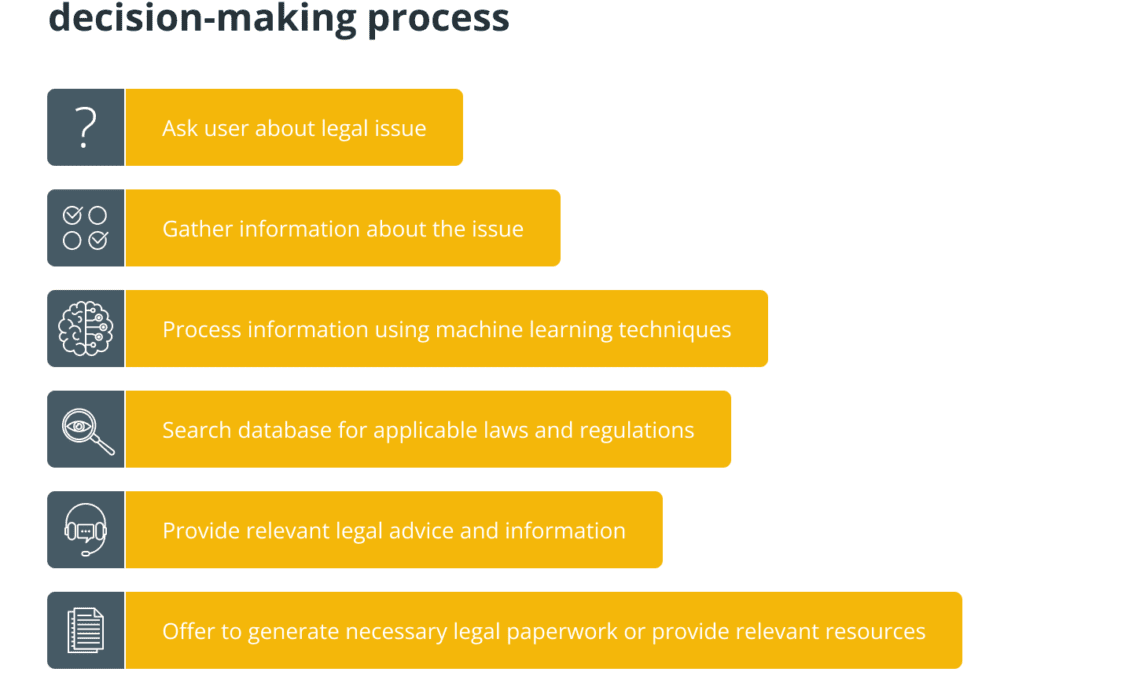Legal chatbots gather information from users, process that data, find applicable legal information and give the user advice or refer them to a qualified lawyer if necessary.
Here are the general steps of how legal chatbots function:
Information gathering
The chatbot gathers data from the user via queries or prompts, which may include the nature of the legal issue, the location and any other relevant information.
When a user first accesses the chatbot, a message asking about the nature of their legal problem is displayed to them. Suppose the user responded that they have a traffic ticket and wish to contest it. To acquire the applicable information, the chatbot asks for additional details, including the location, time and nature of the infraction.
Processing the data
The chatbot examines the data it gathers, using machine learning techniques to understand the user’s legal concerns and deliver relevant information.
Finding an applicable response
The chatbot searches its database or knowledge base for applicable legal information and sources such as laws, regulations and cases.
Giving direction
Based on the data gathered and examined, the chatbot gives the user direction or legal advice. This could entail recommending a plan of action, offering legal paperwork, or pointing the user toward suitable materials or services.
In the case of a traffic ticket, the chatbot’s response may include steps to dispute the ticket or provide information on traffic laws. The chatbot may also offer to generate the necessary legal paperwork or provide a link to a relevant resource.
Referring to a lawyer
If the user’s legal problem is complicated or outside the chatbot’s scope of expertise, it may refer them to a qualified lawyer for more help.
Click Here to Read the Full Original Article at Cointelegraph.com News…
